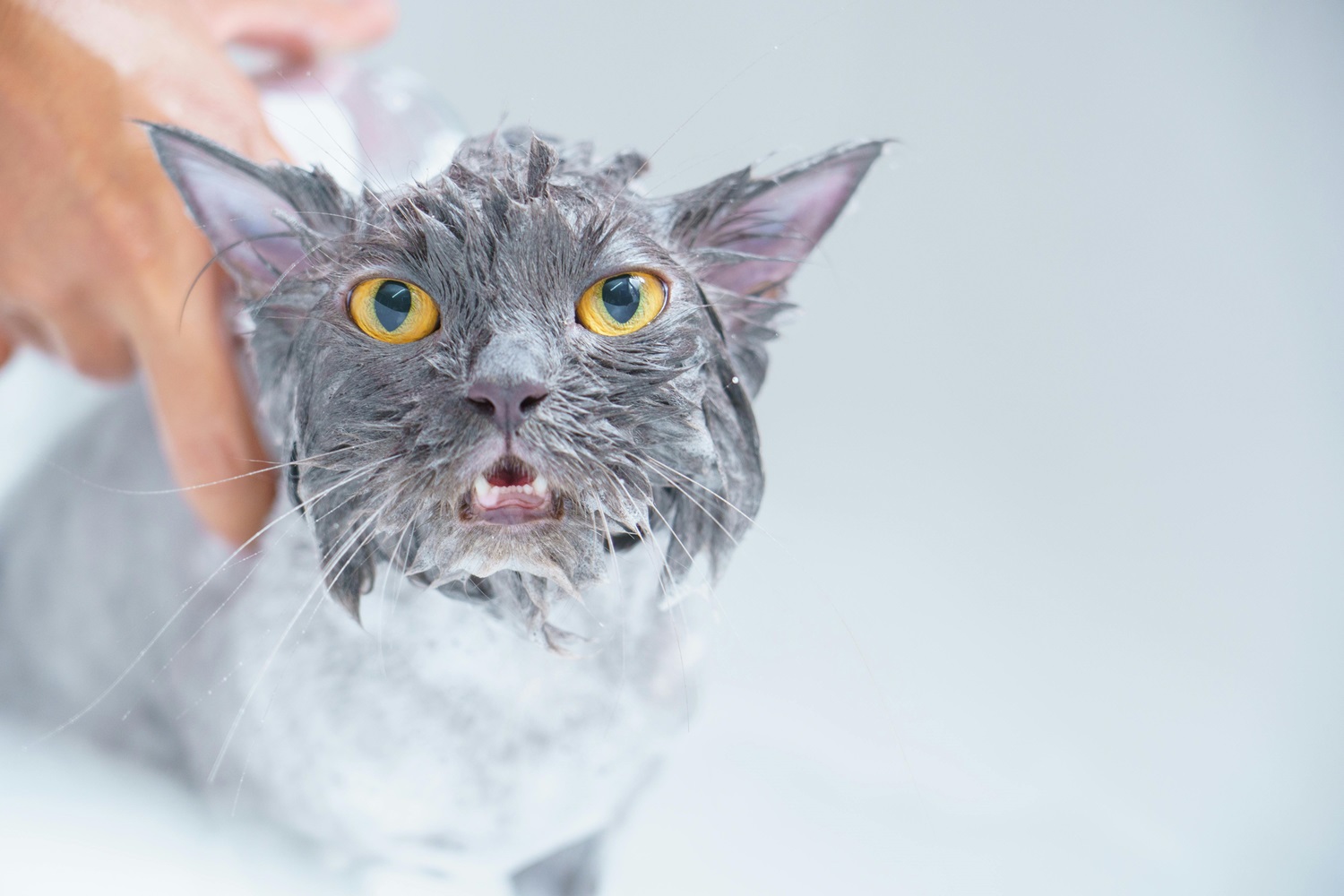Keeping your cat clean and healthy involves proper grooming, and a cat-specific shampoo is an essential part of this process. Cats are meticulous self-groomers, but there are times—like after a messy accident, exposure to dirt, or a skin condition—when a bath is necessary. Using the correct shampoo ensures your cat’s comfort, maintains their skin health, and prevents irritation.
Why Use Cat-Specific Shampoo?
Cats have sensitive skin with a pH level between 6.2 and 7.2, which is more neutral compared to human skin (pH 5.5). Using human shampoo on cats can disrupt their skin’s natural balance, leading to dryness, irritation, or even allergic reactions. Cat shampoos are formulated to gently cleanse without removing essential oils or causing discomfort.
Types of Cat Shampoos
When choosing a shampoo, consider your cat’s specific needs. The market offers a range of formulations designed to address different skin and coat conditions:
1. General Cleansing Shampoos
- Ideal for cats with normal skin and coat.
- Provides basic cleaning to remove dirt and odors.
2. Hypoallergenic Shampoos
- Designed for cats with sensitive skin or allergies.
- Free from harsh chemicals, fragrances, and dyes.
3. Medicated Shampoos
- Used to treat skin conditions such as fungal infections, dermatitis, or parasites.
- Contains active ingredients like chlorhexidine or ketoconazole.
- Should only be used under veterinary guidance.
4. Oatmeal or Moisturizing Shampoos
- Ideal for cats with dry or flaky skin.
- Includes soothing ingredients like oatmeal, aloe vera, or coconut oil.
5. Flea and Tick Shampoos
- Formulated to kill fleas, ticks, and other pests.
- Provides temporary relief and should be combined with long-term preventative treatments.
6. Waterless Shampoos (Dry Shampoos)
- A great alternative for cats that dislike water.
- Comes in sprays, foams, or wipes for quick and hassle-free cleaning.
7. Shampoos for Specific Coat Types
- Long-haired cats benefit from detangling and moisturizing formulations.
- For cats prone to shedding, de-shedding shampoos help reduce hair loss.
Ingredients to Look For
When selecting a cat shampoo, prioritize products with:
- Natural Cleansers: Gentle surfactants derived from plants.
- Soothing Agents: Ingredients like oatmeal, chamomile, and aloe vera to calm irritated skin.
- Moisturizers: Glycerin or natural oils to keep the skin hydrated.
Ingredients to Avoid
- Essential Oils: Many essential oils, such as tea tree oil, can be toxic to cats.
- Artificial Fragrances and Dyes: These can trigger allergies or skin irritation.
- Harsh Chemicals: Sulfates and parabens can strip oils and harm sensitive skin.
How to Bathe Your Cat
- Prepare the Environment: Use a non-slip mat and gather all necessary supplies (shampoo, towels, a cup, and a brush).
- Brush First: Remove tangles and loose hair before wetting your cat.
- Use Lukewarm Water: Ensure the water is comfortable and not too deep.
- Apply Shampoo: Massage the shampoo gently, avoiding the eyes, ears, and nose.
- Rinse Thoroughly: Residual shampoo can irritate the skin.
- Dry Gently: Wrap your cat in a towel to absorb moisture. Avoid using a hairdryer unless it’s on a low, quiet setting.
When to Consult a Veterinarian
If your cat has persistent skin issues, excessive shedding, or visible irritation, consult a veterinarian before using any shampoo. They may recommend a specific medicated product or identify underlying health concerns.
Conclusion
Choosing the right cat shampoo ensures your feline stays clean, comfortable, and healthy. Always prioritize products tailored to cats and their unique needs, and handle bath time with patience and care. For sensitive or health-compromised cats, seek advice from your veterinarian to select the safest and most effective grooming solution.
For trusted brands, consider products from companies like Earthbath, Vet’s Best, or Burt’s Bees, which cater to a wide range of feline grooming needs.

